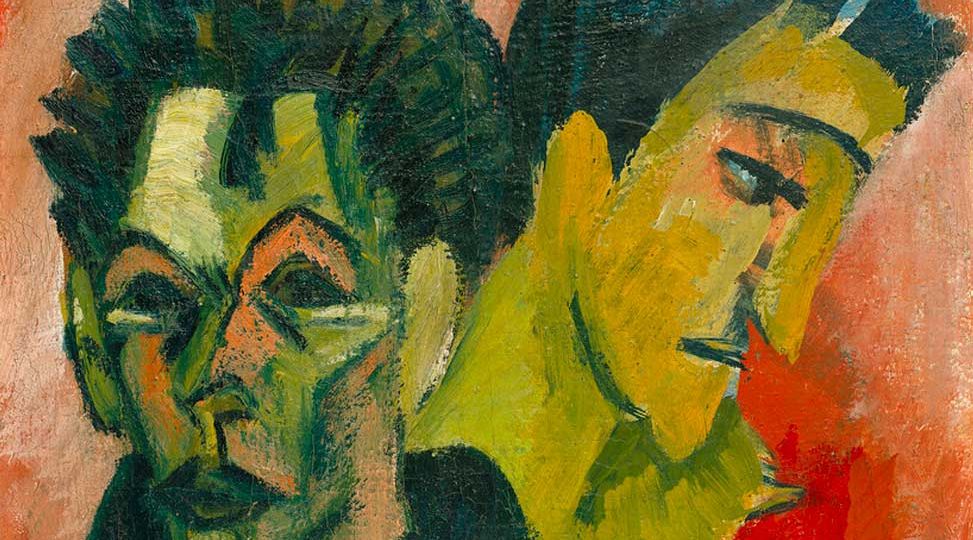
Ambiversion: Ideal or Myth?
Ambiverted or Ambivalent?
Carol Shumate, July 1, 2015
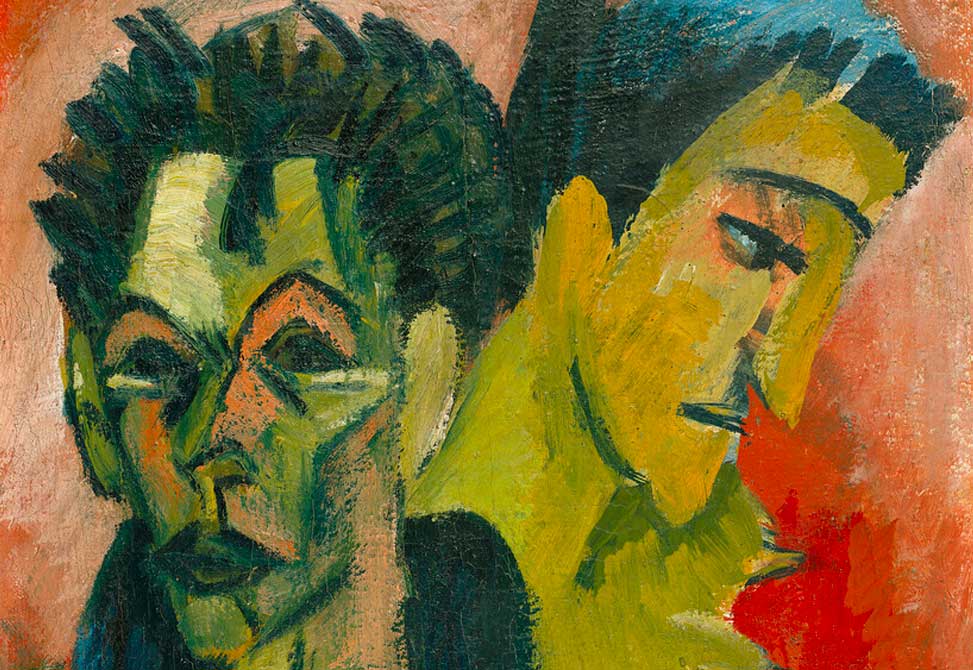
An analyst who studied with Jung, Joseph Wheelwright (1982, pp. 14-15), mentioned the Aitutaki tribe in the Pacific as capable of flipping rapidly between introversion and extraversion. So apparently ambiversion can exist. But Wheelwright concurred with Jung, who called this “the mark of a primitive mentality” (1921/1971, para. 667). As Jungian analyst Daryl Sharp observed in his Jung Lexicon, “Ambivalence is associated in general with the influence of unconscious complexes, and in particular with the psychological functions when they have not been differentiated” (1991, p. 15).
Jung is often cited as saying that “there is no such thing as a pure extravert or a pure introvert,” a misquote that is used to suggest that ambiversion is the natural, healthy state (see for example, Ankeny, 2015, p. 38). But the actual quotation, read in full, leads to a different understanding: “Strictly speaking, there are no introverts and extraverts pure and simple, but only introverted and extraverted function-types, such as thinking types, sensation types, etc.” (1921/1971, para. 913). In other words, the terms extraversion and introversion, are attitudes indicating the direction or orientation of the mental functions, not independent of the mental functions but inseparable from them. According to Jung, who introduced these terms into the psychological lexicon (Falzeder, 2013, pp. 10-12), we are always one-sided because we can only have one primary function: “Absolute sovereignty always belongs, empirically, to one function alone, and can belong only to one function, because the equally independent intervention of another function would necessarily … contradict the first” (para. 667).
Normal vs. Individuated
Another Jung quotation that is often elided and misinterpreted (Ankeny, 2015, p. 38) is the following, which follows a discussion of extraverts and introverts: “There is finally a third group, and here it is hard to say whether the motivation comes chiefly from within or without. This group is the most numerous and includes the less differentiated normal man” (1921/1971, para. 894). Because of its reference to the “normal man,” this quotation, when cited out of context, further exacerbates the misunderstanding that ambiversion is either an option or a desirable state, when in fact the key phrase in the quotation is “less differentiated.” Jung goes on to say about the extraverted and introverted attitudes, “This difference of attitude becomes plainly observable only when we are confronted with a comparatively well-differentiated personality [my emphasis]” (para. 971). Differentiation is the process we engage in to develop our personality type as we mature: “Differentiation consists in the separation of the function from other functions, and in the separation of its individual parts from each other” (para. 705). Jung defined individuation, his term for the process of psychological development, as “a process of differentiation (q.v.), having for its goal the development of the personality” (para. 767). He further described the lack of differentiation as “an archaic condition:”
So long as a function is still so fused with one or more other functions—thinking with feeling, feeling with sensation, etc.—that it is unable to operate on its own, it is in an archaic condition, i.e., not differentiated, not separated from the whole as a special part and existing by itself. Undifferentiated thinking is incapable of thinking apart from other functions. … The undifferentiated function is also characterized by ambivalence and ambitendency, i.e., every position entails its own negation, and this leads to characteristic inhibitions in the use of the undifferentiated function. (para. 705)
What is not well-understood in the popular media is that Jung’s references to “normal man” are rarely if ever complimentary. He once remarked that, “To be normal is the ideal aim of the unsuccessful” (1931, para. 161). When Jung referred to the “normal man” he often meant someone who had merged with the collective ideal of the moment, submerging his or her own individuality:
The man of today, who resembles more or less the collective ideal, has made his heart into a den of murderers. … And in so far as he is normally ‘adapted’ to his environment, it is true that the greatest infamy on the part of his group will not disturb him. (1928/1977, para. 240)
Jungian author John Conger explained Jung’s unique understanding of the inter-relatedness of the normal and the pathological as follows: “Normality tells us little about the integration and harmony of the psyche. … Ironically a normal person developing neurotic symptoms may in fact have taken a step toward his or her own psychic health” (pp. 78-79). In Jung’s understanding, the development of extraversion or introversion, out of a state of ambiversion, is actually a benchmark of the psyche’s growth, and the acceptance of one’s innate tendency toward one or the other is a step toward self-realization.
The Illusion of Balance
Of course it is the case that every type has both attitudes at its disposal. What is not well-understood is how difficult it is to discern which is primary. As Sharp noted, “The great difficulty in diagnosing types is … the fact that the dominant conscious attitude is unconsciously compensated or balanced by its opposite” (1987, p. 32). The problem with the concept of ambiversion is that it can deflect us from doing the self-analysis necessary for psychological growth. If we do not ascertain which attitude predominates, we can never know the extent of our subjective bias. Believing that we are ambiverts is a way of denying the inner conflict, denying that we have a subjective bias.
The temptation to believe that we are ambiverts, or that we are intrinsically balanced, has been around since Jung created his system of typology and in part seeded his motivation for writing Psychological Types. Jung’s acknowledged goal was to reconcile the “hostile” psychologies of Adler and Freud, each of which had demonstrable value. His realization that Adler’s system was introverted and Freud’s was extraverted was a major revelation, one that transformed both his theory and his practice of psychology. This understanding led him to consider an understanding of what he called “the personal equation” to be an imperative for psychoanalysts, or in fact for any scholar or scientist pursuing objective truth. Acknowledgement of intrinsic bias became the necessary starting position for his psychology: “Every theory of psychic processes has to submit to being evaluated in its turn as itself a psychic process, as the expression of a specific type of human psychology with its own justification” (1921/1971, para. 857).
The proposal that any system of psychology (including Jung’s own) was necessarily limited, being the expression of its author’s psychological type, did not find a warm welcome in the psychoanalytic community, as Sonu Shamdasani observed in his chapter titled “Psychology’s Relativity Problem” (2003, pp. 72-87). No psychiatrist wanted to acknowledge that his system was fallible, relativized by the limitations of his own mode of consciousness. To this day, the suggestion that we have from childhood developed a particular mode of consciousness with which to interact with the world is not always a welcome one. Hence, the concept of “ambiversion” finds many adherents. However, when Jung said, “One sees what one can best see oneself” (1921/1971, para. 9, italics extant), he demonstrated an understanding of the concept now known as confirmation bias, before behavioral science discovered it.
References
Ankeny, J. (2015, March). A winning personality. Entrepeneur, 36-41.
Conger, J. P. (1988/2005). Jung and Reich: The body as shadow, 2nd ed. Berkeley, CA: North Atlantic Books.
Falzeder, E. (2013). The prehistory of Jung’s concept of psychological types. In J. Beebe & E. Falzeder (Eds.), The question of psychological types: The correspondence of C. G. Jung and Hans Schmid-Guisan, 1915-1916 (pp. 9-17). Princeton, NJ: Princeton University Press.
Grant, A. (2013). Rethinking the extraverted sales ideal: The ambivert advantage. Psychological Science, 24(6), 1024-1030.
Jung, C. G. (1921/1971). Psychological types (H. Read et al., Eds.), The collected works of C. G. Jung (R. F. C. Hull, Trans.) (Vol. 6). Princeton, NJ: Princeton University Press.
Jung, C. G. (1928/1977). The relations between the ego and the unconscious (H. Read et al., Eds.), The collected works of C. G. Jung (R. F. C. Hull, Trans.) (Vol. 7). Princeton, NJ: Princeton University Press. (Reprinted in Two essays in analytical psychology.)
Jung, C. G. (1931). Problems of modern psychotherapy (H. Read et al., Eds.), The collected works of C. G. Jung (R. F. C. Hull, Trans.) (Vol. 16). Princeton, NJ: Princeton University Press. (Reprinted in Modern man in search of a soul.)
Pink, D. (2013). Why extroverts fail, introverts flounder, and you probably succeed. Washington Post online, January 28.
Shamdasani, S. (2003). Jung and the making of modern psychology: The dream of a science. Cambridge, MA: Cambridge University Press.
Sharp, D. (1987). Personality types: Jung’s model of typology. Toronto, Canada: Inner City Books.
Sharp, D. (1991). C. G. Jung Lexicon. Toronto, Canada: Inner City Books.
Wheelwright, J. B. (1982). St. George and the dandelion: Forty years of practice as a Jungian analyst. San Francisco, CA: C. G. Jung Institute of San Francisco.
Header Image
Ernst Ludwig Kirchner, “Doppel-Selbstbildnis” (“Double Self-portrait”), 1914-1915.



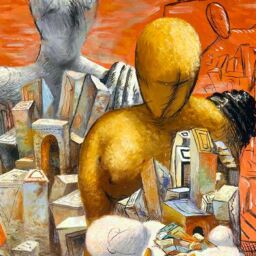
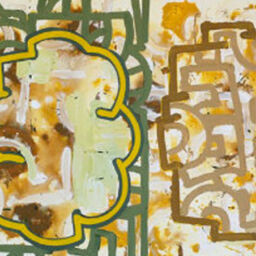

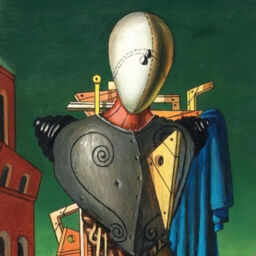


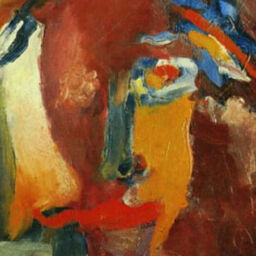
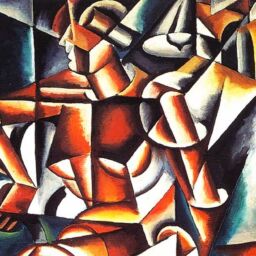
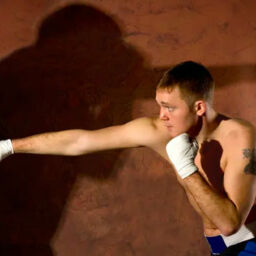
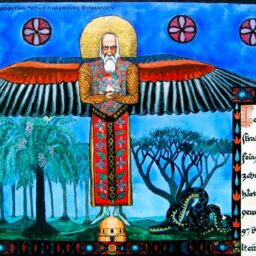
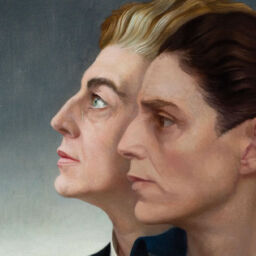
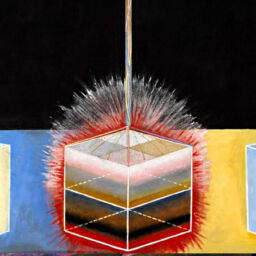



[…] the online journal Personality Type and Depth. “Ambiversion: Ideal or Myth?” by Carol Shumate, https://typeindepth.org/2015/07/ambiversion-ideal-or-myth/. “Ambiversion and Individuation,” by Steve Myers, […]
The one thing I do want to emphasize that I might’ve not done so sufficiently in my remarks is that there’s more than one way to have a very individual personality, so e.g. some were more balanced on irrationality/rationality, and others less so, but Jung’s typological figure was not dichotomous, more like a compass, so whatever point on the compass you fall on, its opposite goes closer to the shadow.
So e.g. some thinking dominants were more identified with thinking by far than any of the others, others were more balanced between say thinking and intuition (Jacobi gives Schopenhauer vs Kant as examples — I think it would be pushing it to say, just because Kant was more exclusively identified with thinking, that he was less “healthy” or any such thing..rather, the lesser the bias to intuition, the less sensation might’ve taken a hit — as long as the other 3 were acting in compensatory fashion).
Okay, this is just my being pedantic at myself, but anyway, where I said von Franz “wrote” I should have said von Franz “said” since I watched that in a video interview.
I like ptypes’ comment about the importance of openness to different kinds of experience. It’s an important value to try to impart in teaching about type.
Also, wanted to note in here: there’s a big difference between having an attitude/preference and the sheer level to which one taps the various consciousness sorts.
Jung/Jungians have remarked that the creative individual can be very hard to type, and I think they were more or less observing something similar to what some of the more obsessive empiricists slant, e.g. the five factor model folks, which is that overall openness to experience renders one more likely to tap into all aspects of consciousness (feelings, values, thoughts, sensations, etc).
Jung was very talented at many things, and very hard to type in some ways, because he hit so many aspects of consciousness (von Franz wrote that he was often seemingly better at everything).
Type is more like a core overall attitude than an empirical summation of what aspects of consciousness you tap into. Many factors outside of core Jungian type probably affect that.
To some extent, there is no conflict between intuition and sensation and thinking and feeling, because they are to a large extent simply pertaining to different domains of experience — so overall openness would be more instrumental in how much they are tapped.
Probably this is also relevant to Adam Frey’s remark.
Well, my understanding is Jung’s portraits of the people with mostly undifferentiated auxiliary and so forth is more of an illustration than necessarily what he thought is the case almost all the time. He did seem to suggest in his auxiliary section that you get the typical portraits of the practical intellect, artistic intuition, and all that stuff.
But as for how many processes are differentiated, I do think there’s a steep difference in his theory between differentiated and accessible. Most normal people aren’t so say, intuitive, that they feel they are treading on air or something. And I even think skill is mostly different from type, because it’s more an objective than individual thing – that is, it’s something more related to how well you can do a task against objective standards than the position something holds in the psyche.
For example, nothing is to say the objective capability of an introverted feeling type’s extraverted thinking is somehow less than that of some other extraverted thinking dominant. It is less egoistic a function-attitude, and tends to be deployed in service of good feeling, but at the end of the day as long as it can do this in harmony with its own nature, it’ll work very well. Raw skill is one thing, but the individual slant/spin placed on the process is quite another, and I think the latter is more related to how close to the ego it is.
So in short I think people learn a lot of different processes’ mechanics well enough skill-wise, but I think that’s relatively different from the processes whose principles most define the ego.
As for the overall issue of how conscious/unconscious people are, I think there’s something of a truth that much of what people do actually is mostly a product of their reacting to complexes and unconsciously motivated instinctual drives than the individual work of the ego. There are two aspects to the ego: one is reacting and the other is deciding. I get the sense that the more someone runs on instinct, the less the latter is occurring. Instinct meaning, say, just to relive the thrill of succeeding at something, or in avoidance of pain/fear, or so forth. When all this is taken away, and one acts solely of one’s nature, the ego becomes more evident and rigidly defined. Until then, the ego merely serves as a film to filter how one can activate the instinctual pleasures.
I’ve been fascinated for a long time by the discrepancy between how Jung describes the typical person in “Psychological Types” as being largely unconscious and undifferentiated other than in the superior function, and how people who begin to learn about type often experience themselves as being able to use a number of different types of consciousness rather easily. Thus we can feel ourselves to be ambiverts if we move easily between the dominant and auxiliary functions and if we experience the auxiliary function as doing its job effectively.
One way to reconcile this discrepancy between Jung’s view and what can be observed today is to consider that people in general may actually have become a little more conscious over the past 95 years thanks to the attention that the new field of psychology has called to unconsciousness and its dangers. And maybe the people who are drawn to the type movement are, on average, more conscious than the “normal” person.
Another possible reconciliation may come in how we determine whether a function is differentiated. Maybe the ability to use a particular function when life demands it does not signify that the function is truly differentiated. Maybe the function is only really differentiated when it is possible to separate it a bit from its associated archetype (according to the Beebe eight-function, eight-archetype model).
Thus, as an ISFJ, my dominant introverted sensation is normally used in an archetypally heroic way to master the situation. But if I have to, I can also use it in a caretaking way, an energy typically associated with the auxiliary function. I don’t really enjoy using introverted sensation to take care of others–for example, by preparing their income taxes for them–but i CAN do it. I could probably also use it in other archetypal roles if I had to, such as to trick someone or undermine them. I wouldn’t enjoy it, but I think I could do it.
Conversely, I am really not able to use my auxiliary extraverted feeling in a heroic way as an ENFJ or ESFJ would. In that sense, my extraverted feeling is pretty much stuck in the role of the nurturing good father. That’s all it knows how to do. So maybe it would be accurate to say that my auxiliary is not fully differentiated as my dominant introverted sensation is. The same would be true for me of all the other, less preferred functions.
The Bay Area Association for Psychological Type has invited Peter Geyer to speak on the subject of type and consciousness this month. Perhaps he’ll be able to shed some additional light.
Is ambiversion free?
After reading Carol’s article I wondered if ambiversity carries a cost, perhaps analogous to the cost associated with ambidexterity. While not an exact analogy, unimanual handedness is pretty close to innate: it manifests at ages 5 to 7 months in infants. But such innate handedness can be compensated and there are well known ambidextrous sports figures, e.g., Pete Rose was famous for being a “switch-hitter,” batting right- or left-handed with (apparent) equal facility. But does going against innate preference produce some mild form of cognitive dissonance? When she is tossed a ball does an ambidextrous girl have to consciously decide to use her inferior hand rather than subconsciously catch with the innately preferred hand? I.e., does differentiation extract a psychic toll?
– Ed
I appreciate the thoughtful comments. Of course we’ve had many advances since Jung, and what he says on this matter sounds paradoxical, but I find it good news that what is most unusual in us, most differentiated and individualized, is actually a good thing. Yes, we need to modify our ‘differentness’ and if we don’t, life will polish those sharp edges for us or else, as p-types says above quoting Jung, we may end up in an asylum. We can see in the article on Nietzsche the consequences of one-sidedness. But I read Jung as saying it’s more than OK to be angled in one direction—it’s necessary for development. I love the comment about detached vs. apathy—the spiral image says it well.
I also agree with Jack that outstanding leaders have learned facility in many functions of both attitudes, but I don’t think this ever negates the primary attitude. For example, Lincoln became fluent in many extraverted functions but remained clearly an introvert throughout his life. I find his comment late in his presidency extremely touching:
“It is my ambition and desire to so administer the affairs of the government while I remain president that if at the end I shall have lost every other friend on earth I shall at least have one friend remaining and that one shall be down inside of me” (Burlingame, 1994, p. 8).
I think this was what Jung was urging us toward—to accept and acknowledge our differentness, and to befriend the self inside.
– Carol
For a less detailed, more holistic comment, I think appropriate since Jung was pretty psychospiritual in his leanings, I think it’s like the difference between monks preaching detachment vs apathy. Detachment means not giving in to one-sidedness, so that one can achieve wholeness and traverse the circle. Apathy means staying at one point forever, never moving, giving the illusion that one has traveled the circle. Apathy would correspond to the undifferentiated state, enlightened detachment to the person who has traversed the circle. They have a memory of how things looked when they started, i.e. their ego-attitude, but also achieve quite a high degree of perspective on the equivalence between the opposite directions in the sense of leading to the same point back again.
The point loosely being that as long as life goes on, being stationary at one point is an illusion — always there is motion, whether acknowledged or not, and the goal is to gain a full perspective one one’s starting point — not necessarily to move in one direction as opposed to another.
I think there’s something interesting to discuss in the “normal man” quotation — Jung was apparently suggesting that a majority do not seem to be significantly differentiated in the introversion-extraversion axis (as he states, “most numerous”).
Note that here he’s talking of differentiation of an *attitude*, not of a function (e.g. not differentiation of intuition from sensation, but of introversion from extraversion).
I wonder what people who subscribe to the more modern typologies, which place two ego functions in opposite attitudes as differentiated in consciousness, have to say about how that might change up the perspective from what Jung was saying a bit. Modern typology seems to be a little more charitable to the “normal man,” suggesting they still may have a well-defined type preference pattern, but one where the compensation occurs in an alternating pattern, not as across the conscious-unconscious division (e.g. Jung would view consciousness as either almost-wholly… but of course not 100%, else the person belongs in a lunatic asylum in his words… identified with the introverted or extraverted attitude).
Basically, this allows for the normal man to be more differentiated than Jung’s quote might appear to give credit, but while still appearing to conform to what Myers put forth, in disagreement with many Jungian scholars it seems, on the level of balance of the introverted and extraverted attitudes which should exist in consciousness. Because, in effect, it affords a unique enough energy for deployment to each of the main 2 functions that they may not each have to move forwards and backwards at once (or, more suggestively, outward and inward at once).
The reason I am not writing off the modern typologies here is quite specific, me being slightly Jungian purist yet preferring adequate detached consideration of relevant points of view to purism any day. The reason is this: already, Jung’s assertion that the auxiliary and dominant together form the conscious attitude in many cases is, if really grilled, a not so obvious fact to accept, given this winds up somewhat watering down, it would seem, the rational-irrational divide. Jung’s justification for this is apparently that the auxiliary, while only useful if subordinated to the dominant principle, can do so in such a synergistic fashion that it more or less gets raised to consciousness by virtue of being “carried” by the dominant’s consciousness.
But as we know, more concretely, this poses never-ending debates on rational vs irrational types: Jung’s own type is a debate that rages on even today, and Marie-Louise von Franz confirms this problem by suggesting that an intuitive-thinking type and a thinking type with good intuition can be extremely hard to tell apart.
If both Jung’s assertion that there must be clear aims in consciousness where either rationality or irrationality maintains its own principle in full and his idea that the top two functions can more or less cluster together to form in synergy the dominant attitude must be true… realistically it could be that this happens by way of attaching distinct directions to each of those top two.
The alternate interpretation is of course one I often give, which is that the function-attitude defining consciousness might be more, as Jacobi suggests once, an admixture of perceiving and judging in some types, than truly clearly defined by one principle.
Although it does seem if one juggles the axioms a little, these two points of view may have more parallels than I might’ve thought before beginning to compose this reply.
On that note, I enjoyed the article much, as with all your past ones I’ve read, thanks for it.
This is a usual masterful article by Carol Shumate, PhD., exquisitely crafted and well architected in thought. In our work with organizational leaders, I have found on a practical front that I have known a handful of people who are ambidextrous in extroversion and introversion, and in fact to a great extent on all the preferences. I have known a few people I would classify as multi-type.
These people are not in an identity crisis, they have the both a natural precience and developed ability to transition from preference to preference, and type to type with a certain range. These people have a combination of very high intelligence and an ability to navigate humanity in a way that few people do. They are more than charismatic, and even beyond empathetic. They are extremely gifted with the tools of personality that support leadership.